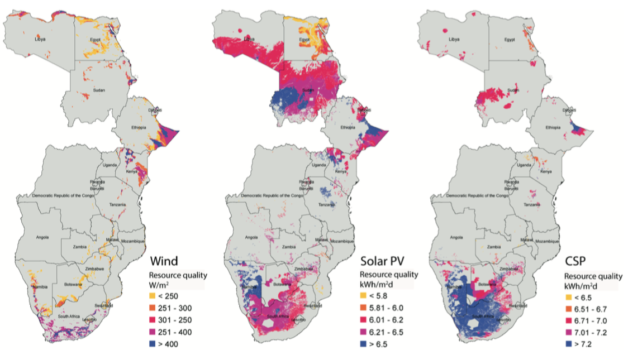Solar and wind will be able to gain more market share in the African energy economy only if strategic siting and international interconnections are considered by governments.
These are the main conclusions of the report “Strategic siting and regional grid interconnections key to low-carbon futures in African countries”, which was released by the US Department of Energy’s Berkeley Lab.
The study, which assesses the potential of solar and wind in 21 countries which belong to the Southern African Power Pool (SAPP) or the Eastern Africa Power Pool (EAPP), was published in the journal Proceedings of the National Academy of Sciences (PNAS).
The authors of the report have based their evaluations on the Multicriteria Analysis for Planning Renewable Energy (MapRE, at mapre.lbl.gov) developed at Berkeley Lab in collaboration with International Renewable Energy Agency (IRENA), which provided the initial funding for the research.
The Berkeley Lab experts have also relied on criteria such as quality of the resource, distance from transmission lines and roads, co-location potential, availability of water resources and potential human impact.
The scientists claim that a more robust energy trade alongside improved grid connections would boost the development of wind and solar projects across African countries, and would help to reduce the cost of power. “It makes economic sense. Through planning around multiple stakeholder criteria and prioritizing wind and solar projects for regional energy trade, policymakers and financiers can increase their cost-competitiveness,” said Berkeley Lab expert Ranjit Deshmukh.
Popular content
Multicriteria site selection and deliberate planning of interconnections are considered as the best tool to make renewables cost-competitive with conventional power resources in Africa. Multicriteria resource mapping, the authors of the report stress, can minimize risk by enabling strategic site selection.
The report also highlights that the EAPP and SAPP are currently considering new international interconnections to exchange future conventional and hydroelectric generation and that the interconnections for renewables are substantially different.
The study also finds that Tanzania, Zimbabwe, Botswana, and Lesotho can meet 30% of their projected 2030 demand with low-impact solar PV, while Ethiopia, Sudan, Uganda, and Tanzania can most favorably achieve 30% solar PV generation targets domestically. Democratic Republic of Congo, Zambia, Angola, South Africa, Egypt, Kenya, and Libya, however, have some cost-effective sites that should receive high prioritization, but are not in the top 20% primarily due to limited transmission access.
This content is protected by copyright and may not be reused. If you want to cooperate with us and would like to reuse some of our content, please contact: editors@pv-magazine.com.



By submitting this form you agree to pv magazine using your data for the purposes of publishing your comment.
Your personal data will only be disclosed or otherwise transmitted to third parties for the purposes of spam filtering or if this is necessary for technical maintenance of the website. Any other transfer to third parties will not take place unless this is justified on the basis of applicable data protection regulations or if pv magazine is legally obliged to do so.
You may revoke this consent at any time with effect for the future, in which case your personal data will be deleted immediately. Otherwise, your data will be deleted if pv magazine has processed your request or the purpose of data storage is fulfilled.
Further information on data privacy can be found in our Data Protection Policy.